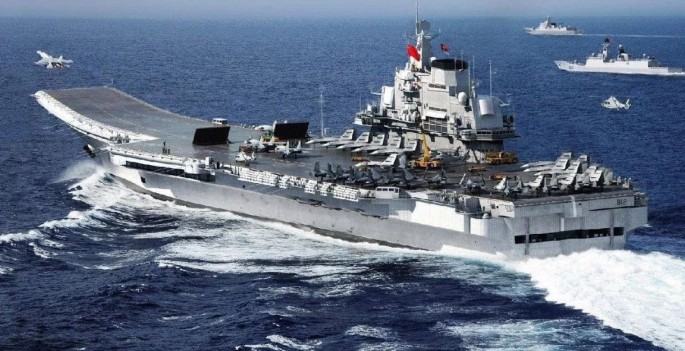Japan reckons the latest -- and longest -- naval patrol conducted by the CNS Liaoning (CV-16), the only aircraft carrier of the People's Liberation Army Navy (PLAN), is China's way of sending another pointed message to U.S. President-elect Donald Trump.
The Liaoning and its escorting warships (destroyers and tankers) departed the Chinese mainland Dec. 16 for the PLAN Surface Fleet's longest patrol into the Western Pacific.
On Dec. 23, Shenyang J-15 multirole fighters took off from the Liaoning to carry out missions, including air refueling and simulated air combats over the Yellow Sea. A PLAN press release said the training was guided by PLAN Commander Admiral Wu Shengli.
PLAN said the training "strengthened the synergy among different vessels in the formation and refined its overall capability."
It claims the training and tests were "normal arrangements in accordance with annual plan made by the navy."
The Liaoning can embark 36 aircraft: 24 Shenyang J-15 fighters; 6 Changhe Z-18F anti-submarine warfare helicopters; 4 Changhe Z-18J airborne early warning helicopters and 2 Harbin Z-9C rescue helicopters.
Japan has been monitoring the progress of the Liaoning battle group since it was detected in the East China Sea by a Japan Maritime Self-Defense Force (JMSDF) destroyer and an aircraft some 110 km northeast of Miyako Island on Dec. 25. The Japanese government said the JMSDF will maintain surveillance over the area.
Chief Cabinet Secretary Yoshihide Suga said Liaoning's sortie into the Pacific shows China's expanding military capability. He said this is the first time the JMSDF has confirmed a Chinese aircraft carrier advancing toward the Pacific Ocean.
Suga said the Chinese sortie appears aimed at sending a message to Trump, who is questioning whether the United States should continue to adhere to its nearly four-decade policy of recognizing Taiwan as part of a "One China Policy."
Sources close to Trump are saying the next President will also put more teeth into Barack Obama's five year-old pivot to Asia strategy by increasing the number of ships, planes and men in the U.S. Navy.
Confronting China militarily has long been expected of Trump, who blamed Obama for failing to prevent China from building man-made islands that militarized the South China Sea and led to festering tensions that might one day ignite a war.



























